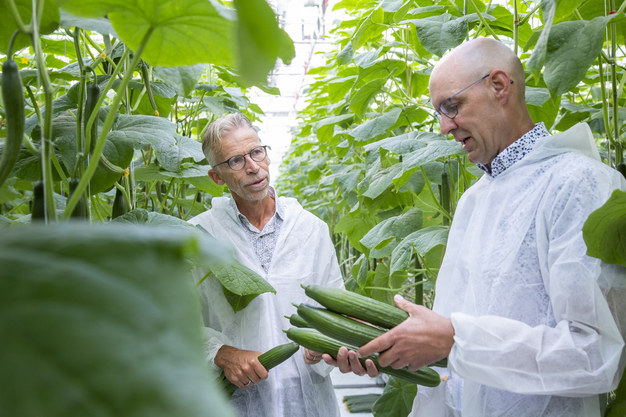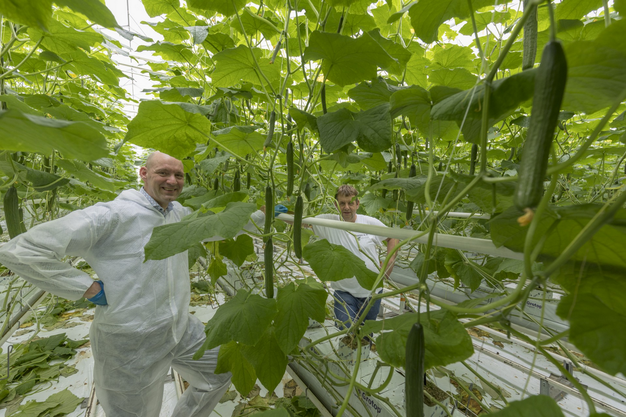Marcel van Koppen explains that several crucial advancements in production methods occurred from 1980 to 1982, which was a period of high energy costs. "Around this time, the so-called flue gas condenser was introduced in greenhouses. The purpose of a flue gas condenser is to cool the temperature of the flue gases to below the dew point for water vapor present in the flue gases. The CO2 produced by these boilers supported high increases in yield, even at a minimum level of ventilation."
Another important transition was the introduction of substrate cultivation, something that boosted production numbers by approximately 15-20%. Simultaneously less energy input was needed since it was no longer necessary to heat the soil. "In the early nineties, biological pest control was introduced," states Marcel. "Thankfully, heavy-chemical, broad-spectrum, and difficult-to-degrade insecticides have now been banned for over 30 years."

According to Marcel, one of the more recent changes to have taken place is the slow shift from traditional to high-wire production during the past 20 years.
Looking ahead, what kinds of developments does Marcel expect on a production level? "I believe that the search for sustainable energy sources will become increasingly important in the future. For example, I expect to see a further rise in the usage of LED lighting. In addition, there will most likely be an increase in the use of geothermal energy or a heat exchanger, which stores heat in the summer to use in the winter."
He believes that growers will continue to look for ways to intensify production while using less energy, so it can be theorized that energy efficiency will remain an important topic in the future.
Marcel believes that production risks present another challenge for growers. "Take less moisture drainage, for instance. This results in a less active plant, and therefore creates a higher risk of fungus," comments Marcel. The trend of allowing less fungicide and insecticide usage is increasing the pressure on a company such as Rijk Zwaan to develop new varieties with resistance. "Resistances against Pythium, Mycosphaerella, Botrytis, and other diseases are much needed. At Rijk Zwaan, we need to search for new and creative ways to improve plant resilience naturally, as we did with our Blue Leaf trait," he adds. Besides Blue Leaf, varieties can be developed based on plant types that are less attractive to insects or that have resilience against fungus.

Marcel concludes that: "Climate change will also have a large impact on the development of new varieties. They will increasingly need to be able to withstand heat, drought, and salty conditions."
For more information:
Rijk Zwaan
Burgemeester Crezéelaan 40
2678 ZG, De Lier
www.rijkzwaan.com
